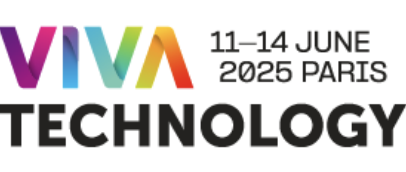Design Thinking: The X factor in your digital transformation
By Brett Parker, Managing Director – SAP Africa at SAP
JOHANNESBURG, South Africa, 3 April 2017,-/African Media Agency (AMA)/- You may have heard about the sword of Damocles, hanging above its target by a single hair. It’s a metaphor often used to describe impending doom, yet this is not the actual meaning. The story goes that a servant was taken by all of a king’s wealth and wanted to partake in that luxury. The king offered the servant supper on his throne, but with a sword hanging above him held by a single strand. Afterwards he asked the servant if he enjoyed the meal, but the servant was too worried about the sword falling.
The sword of Damocles is not about impending doom. It’s about the pressures of power and responsibility. Every business leader feels this, knowing that it takes only a few wrong decisions, or a dollop too much complacency, for disaster to land. Today this pressure is more poignant than ever. Change, as always, is in the air, only now it is happening at breakneck speed. The lifespans of companies are fast become shorter and even historic precedent fails to contextualise what is happening today.
Speed matters and technology is the means to accomplish that speed. Yet technology is not a fix. Any solution purchased to catalyse change is a waste of money. The real reason why companies fail to change and to shift into new spaces, is because they lack the right innovation cultures.
Innovation is a tricky principle to nail down, but it has a simple formula: Innovation = Execution x Creativity. Companies struggle to engage this dynamic, because they suffer from corporate cholesterol. These are the unwelcome fats clogging a company’s arteries: rigid processes, risk avoidance and complacency – anchored through faith in existing frameworks – all effectively suffocate a business’ ability to push forward.
Digital transformation has brought this problem to a head. But, as said earlier, technology is not the solution. Digital transformation is not a process. It is actually an end goal, a new state of business defined by a revolution in technology. Getting there requires transformation on a different level. A transformation that enables people.
Humans are key to innovation. It is human thought that creates new ideas and tests new opportunities. A common barrier for any transformation is a reliance on the familiar. Companies seek out to improve on existing solutions and discover ‘comfortable’ problems that can be turned in a familiar context. But real innovation means going where the business has not gone before – and for that, humans are crucial. The best AI can accomplish incredible things, but what it can’t do is be creative. Technology helps to amplify and augment humans, not replace them.
SAP stumbled upon this concept a number of years ago. In the early 2000s one of its founders wrestled with the company’s wayward direction. The exciting, customer-focus culture of SAP’s startup days – and which brought it success – had been replaced by a regime of prescriptive thought patterns. Then came the concept of Design Thinking.
Design Thinking is a human-centered approach to innovation. It helps companies be empathic around customer and business needs, use collaboration to bring functions and perspectives closer together, and aims to be highly iterative so to better understand and embrace the market. When you focus on people, processes and environments, you encourage creativity. Turn that into a scalable culture and you invite disruptive innovation, not the incremental innovation that translates to little new value.
Harnessing a Risk-taking culture is key. McKinsey, the same consultancy that helped change corporate thinking in the early 20th century, has noted that digital performance and positive risks are joined at the hip. This type of culture not only understands that exponential rewards come with increased risk, but that failure (at least fast failure) is a powerful learning opportunity. Just like learning to ride a bike – if you never fall, you will not know how to find ways to be better.
It’s interesting to note that delivering iterations, far outweighs the importance of delivering the perfect product. 3D Robotics, a drone company established by technology evangelist Chris Anderson, pulled out of its ambitious drone-manufacture plans because it spent all its resources to make the ‘perfect’ drone. Meanwhile DJI, a Chinese company, used constant innovation to drive new products to market. Not all of DJI’s products succeeded, but its momentum held ground. Today DJI rules the drone space while 3D Robotics has exited this market altogether. Enable rapid innovation and you progress.
Design thinking creates a mindset to merge technological feasibility, business viability and human experience. This doesn’t just pertain to outward-facing products. Design thinking is as much about innovating internal processes and ideas. For example, creating new career paths facilitating a wider talent pool, requires a creative approach to what is important to a business.
I won’t claim that SAP has perfected Design Thinking, but it has done amazing things for the company. The goal of moving out of its stoic enterprise trappings is being achieved in unbelievable ways. We have engineered groundbreaking new products, created a workplace for a very diverse workforce, and realised digital transformation by becoming a real-time data-driven business. I’m not pitching a product here. I am stating that without Design Thinking, SAP may today be facing extinction. Nobody is immune from this.
We have since realised the value of bringing this message to our customers and offer free insights into how Design Thinking can help an organisation. The sword of pressure hangs over every business leader. Instead of worrying if it will fall, you can find confidence in a new philosophy that will change your company’s creative and innovation cultures. If you are worried about your business tomorrow, look at Design Thinking today.
Link to the original whitepaper – http://www.sap.com/documents/2016/12/4086a5d3-9d7c-0010-82c7-eda71af511fa.html
Distributed by African Media Agency (AMA) on behalf of SAP Africa
For more information, visit the SAP News Center. Follow SAP on Twitter at @sapnews.
About SAP
As market leader in enterprise application software, SAP (NYSE: SAP) helps companies of all sizes and industries run better. From back office to boardroom, warehouse to storefront, desktop to mobile device – SAP empowers people and organizations to work together more efficiently and use business insight more effectively to stay ahead of the competition. SAP applications and services enable more than 345,000 business and public sector customers to operate profitably, adapt continuously, and grow sustainably. For more information, visit www.sap.com.
# # #
Any statements contained in this document that are not historical facts are forward-looking statements as defined in the U.S. Private Securities Litigation Reform Act of 1995. Words such as “anticipate,” “believe,” “estimate,” “expect,” “forecast,” “intend,” “may,” “plan,” “project,” “predict,” “should” and “will” and similar expressions as they relate to SAP are intended to identify such forward-looking statements. SAP undertakes no obligation to publicly update or revise any forward-looking statements. All forward-looking statements are subject to various risks and uncertainties that could cause actual results to differ materially from expectations. The factors that could affect SAP’s future financial results are discussed more fully in SAP’s filings with the U.S. Securities and Exchange Commission (“SEC”), including SAP’s most recent Annual Report on Form 20-F filed with the SEC. Readers are cautioned not to place undue reliance on these forward-looking statements, which speak only as of their dates.
© 2017 SAP SE. All rights reserved.
SAP and other SAP products and services mentioned herein as well as their respective logos are trademarks or registered trademarks of SAP SE in Germany and other countries. Please see http://www.sap.com/corporate-en/legal/copyright/index.epx#trademark for additional trademark information and notices.
Note to editors:
To preview and download broadcast-standard stock footage and press photos digitally, please visit www.sap.com/photos. On this platform, you can find high resolution material for your media channels. To view video stories on diverse topics, visit www.sap-tv.com. From this site, you can embed videos into your own Web pages, share video via email links, and subscribe to RSS feeds from SAP TV.
For customers interested in learning more about SAP products:
Global Customer Center: +49 180 534-34-24
United States Only: 1 (800) 872-1SAP (1-800-872-1727)
For more information, press only:
Ansophie Strydom, SAP Africa, +27 (11) 235 6000, a.strydom@sap.com
Adam Hunter, Clarity Communications, +27 (711) 787 035, adam@claritycomms.co.za
The post Design Thinking: The X factor in your digital transformation appeared first on African Media Agency.
Source: AMA















